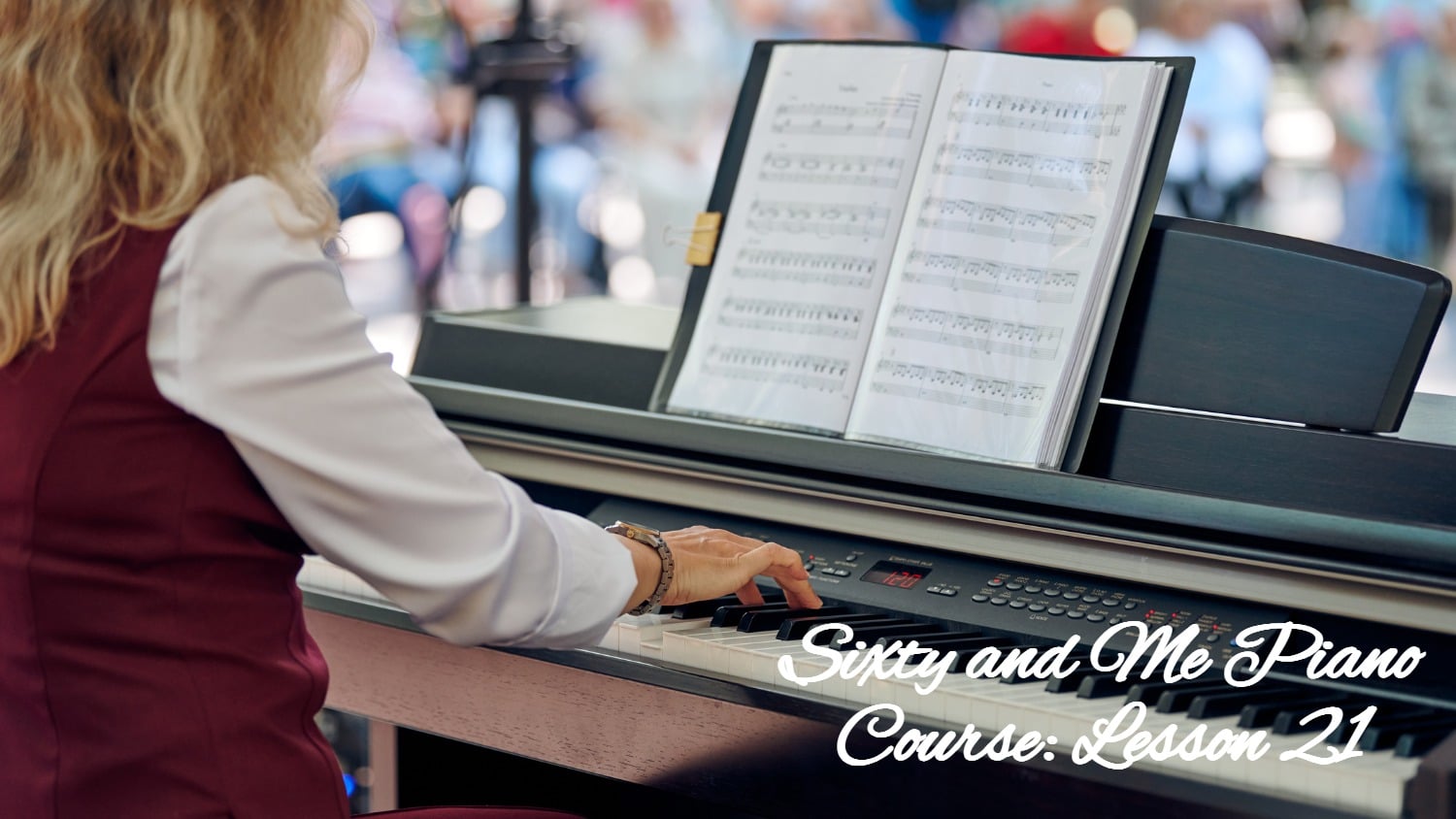
Piano Lesson 16: Reading and Playing Dotted Notes
I’m currently reading a great book called Atomic Habits by James Clear. In a chapter entitled, “The Best Way to Start a New Habit,” Clear cites a large study showing that people were most successful in engaging in activities such as exercising when they formed an “implementation intention,” such as this:
“During the next week, I will partake in at least 20 minutes of vigorous exercise on [DAY] at [TIME] in [PLACE].”
Clear states: “Hundreds of studies have shown that implementation intentions are effective for sticking to our goals” of all kinds, including piano practice (of course, you knew where this was going 😉).
Clear also talks about “Habit Stacking” in which you pair two habits:
“After I pour my cup of coffee each morning, I will meditate for one minute.”
I love reading about strategies that explain how we can turn our goals into habits, because I know that once we form a habit we are more likely to stick with it, and I have several activities for which I want to improve my skills.
I am only on Chapter 5, but I will continue to share Clear’s findings in future lessons if I think they might be of use to you. When you think about it, our daily habits and rituals make up a large part of who we truly are.
[NOTE: If you are just joining us for the first time, you can find my previous Sixty and Me Free Piano Lessons on my Author page. You can join our lessons any time!]
16.1 Dotted Notes p.54-55
You have been playing dotted half notes, but what does the dot actually mean? Today I talk about the dots you see to the right of notes. A dot increases the note by half of its value. In the video below, I demonstrate how to play the dotted quarter notes you see in Trumpet Tune, in our Upper Hands Piano, BOOK 1 on p.54.
Dotted quarter notes are usually followed by eighth notes or eighth rests, because together they equal 2 beats. Dotted quarter notes are held for 1½ beats, and eighth notes or rests are held for ½ beat:
16.2 Trumpet Tune p.54
If you are ready to start playing Trumpet Tune, watch my video to help you hear the rhythm, and count the beats:
16.3 Chord Calisthenics #3
Today we are starting Chord Calisthenics #3. Play each triad as a major chord, then a minor, then back to the major again, with each hand. You will do just the first 4 keys for now, but I am demonstrating all 12 keys (alternating hands) here:
16.4 Rhythm Review p. 53 lines 4-7
For the next two weeks, you will finish up the Rhythm Review on p.53. For the first week, try playing and counting lines 4 and 5. Notice that line 4 is in 4/4 time, so that there are 4 beats per measure. Line 5 is in 3/4 time, with 3 beats per measure. After playing and counting lines 4 and 5, try putting words to the rhythms.
In your second week, play lines 6 and 7. Notice that line 6 is in 2/4 time, and line 7 is in 3/4 time. For these two lines I have asked you to write the counts under the notes, then also come up with words to go along with the rhythms.
Passion Practice!
- Exercise #3 in D-flat (review) and A-flat (new). Play each exercise 3 times: 2x Forte (loudly) then 1x Piano (softly) with each hand. Use the PENTASCALES chart at the back of the book if you are not sure of the hand positions for F# and D-flat. Review Ex #3 in C, G, D, A, E, B and F# when you can.
- Chord Calisthenics #3 – This week you will start Chord Calisthenics #3! Play the major, then minor, then major triads in C, G, D and A.
- Rhythm Review p.53- lines 4-7
- Trumpet Tune p.54 – Play and count the beats as written, very slowly. Once you feel confident that you understand the rhythm, play a little faster without counting.
- Do the Musical Math on p.55 (check your answers here).
- Optional: If you subscribe to my blog you can also play Gershwin’s song, ‘S Wonderful, my August free sheet music giveaway. Download and print the “easier” arrangement and feel free to write in letters next to any notes you haven’t yet learned. You can omit some of the left-hand notes, or even play just the right hand. There is a demonstration video on the post.
Sometimes when I am practicing my French, the thought comes into my mind, “I will never get this! It’s just too hard! Why am I even trying?” Then I remind myself that I have had that thought before, when confronting something difficult in my French Lessons. I tell myself that I will get it eventually if I keep studying, just as I have before. I remember that I have set French fluency as an important and beloved aspiration, so even if I doubt my ability, I will keep my resolve.
Let’s Have a Conversation:
What strategies or affirmations do you use to keep moving forward when you encounter something very challenging in your piano (or other) practice?
Tags Piano Lessons






